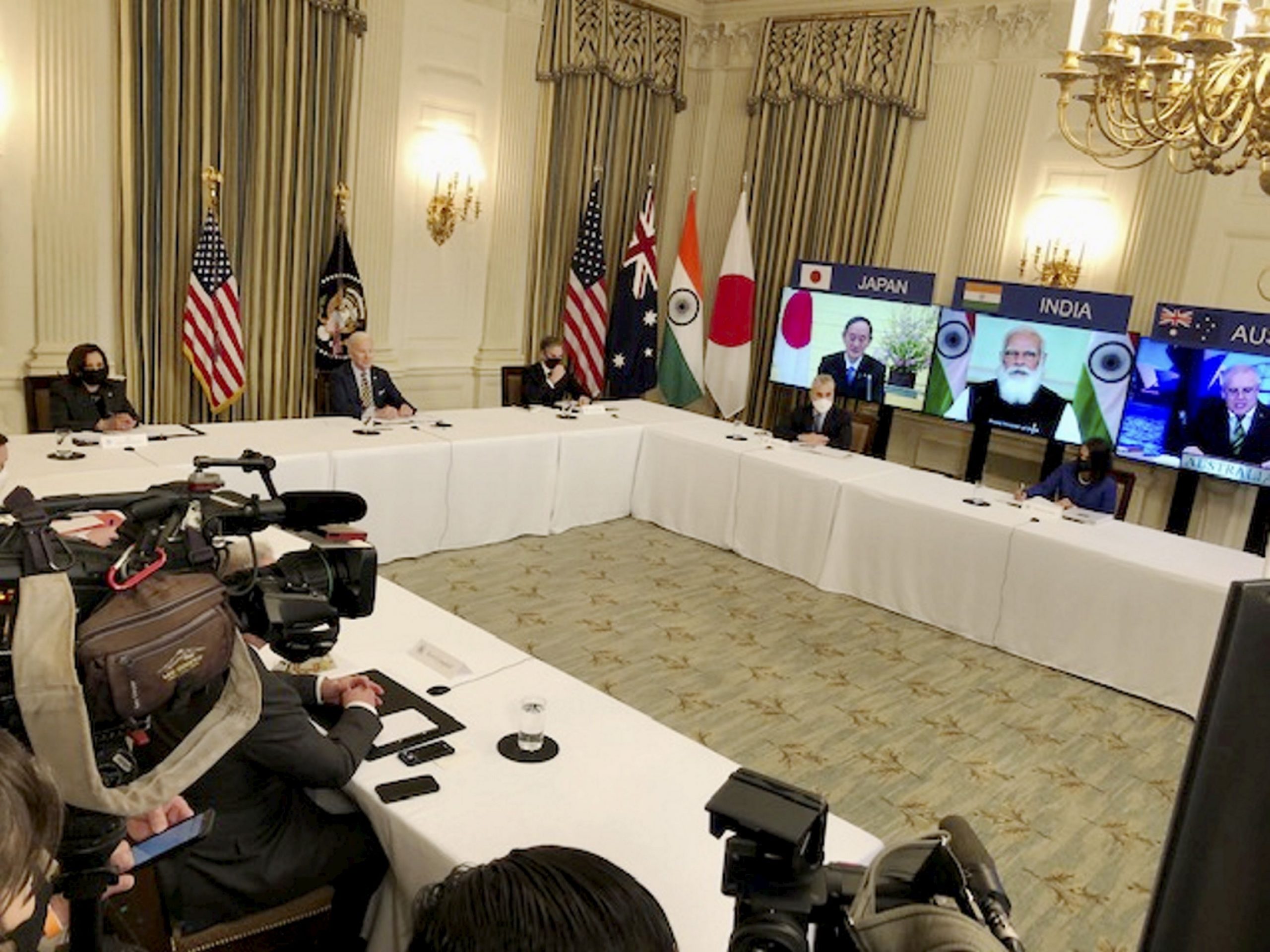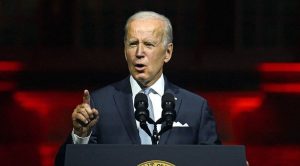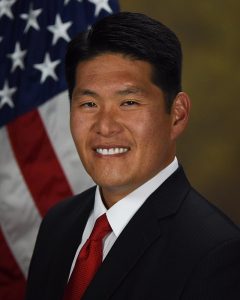The United States, Australia, India and Japan have held their first meeting of the Quadrilateral Security Dialogue, or Quad, since US President Joe Biden’s inauguration – showing the new US administration’s support for a grouping China has criticised as a “clique” that could start a new Cold War.
Former Prime Minister of Japan Shinzo Abe was the first to propose the Quad in 2007, envisaging a grouping that would help uphold “freedom and prosperity” in the Asia-Pacific.
While not mentioning China by name, his proposals were widely understood as aimed at countering Beijing’s growing influence in the region. The then Japanese prime minister solidified that perception in 2012 when he outlined his vision of a “democratic security diamond” to challenge China’s “coercive behaviour” in the East and South China Seas.
Also read: Quad Summit: What to expect from the diplomatic event
In 2007, the Quad held a single round of dialogue and joint military drills, before entering a decade-long hiatus when Australia withdrew from the grouping the following year to boost ties with Beijing.
In 2017, as the Trump administration ramped up confrontation with Beijing, the four countries kicked off the second incarnation of the Quad during a gathering in Manila focused on “issues of common interest in the Indo-Pacific region”.
The Quad, since then, has held several more rounds of dialogue, and last year organised the first joint naval exercises since the forum’s initial incarnation.
Also read: Modi in US: Who are the 5 CEOs Indian PM will meet to attract investment?
What sparked the revival of the Quad?
The aggressive foreign policy of China has set off growing alarm across the region, galvanising calls for cooperation to uphold the “rules-based international order” and push back against perceived coercion and aggression in areas such as the South China Sea.
The members of the Quad became increasingly wary of Beijing in recent years amid disputes over territory, trade, human rights issues, and alleged espionage.
One of the many points of tension include clashes along the Sino-Indian border; allegations of Chinese meddling in Australian politics; and the status of the disputed Diaoyu Islands, known as the Senkaku Islands in Japan.
Also read: PM Narendra Modi’s luggage lock on US trip is every Indian’s travel jugaad
What are the limitations of the Quad?
The Quad remains an informal and loosely defined grouping. There is no official alliance linking its members, and its exact functions and aims remain largely undefined. In 2020, then US deputy secretary of state Stephen Biegun said that the grouping was a “somewhat undefined entity”, expressing its hope that it could “become more regularised and at some point formalised as well as we really begin to understand what the parameters of this cooperation are”.
Will the Quad get new members?
According to reports, the officials and analysts, on various occasions suggested membership of the Quad could be expanded. In October, Marc Knapper, acting deputy assistant secretary of state for Korea and Japan, said although the grouping was not currently “advertising for new members”, it could expand “at some point in the future”.
The same month, Japan’s foreign minister Motegi suggested “like-minded countries” could participate in Tokyo’s vision of a “free and open Indo-Pacific”, singling out France as a European country with “territory in other regions such as East Africa and the Indian Ocean”.
Several Asian countries with a stake in regional stability are seen as reluctant to get too closely involved with the Quad. Although the group’s latest dialogue stressed the importance of cooperation with the Association of Southeast Asian Nations (Asean), the 10-nation bloc is widely believed to be hesitant to be seen taking sides between Washington and Beijing.






